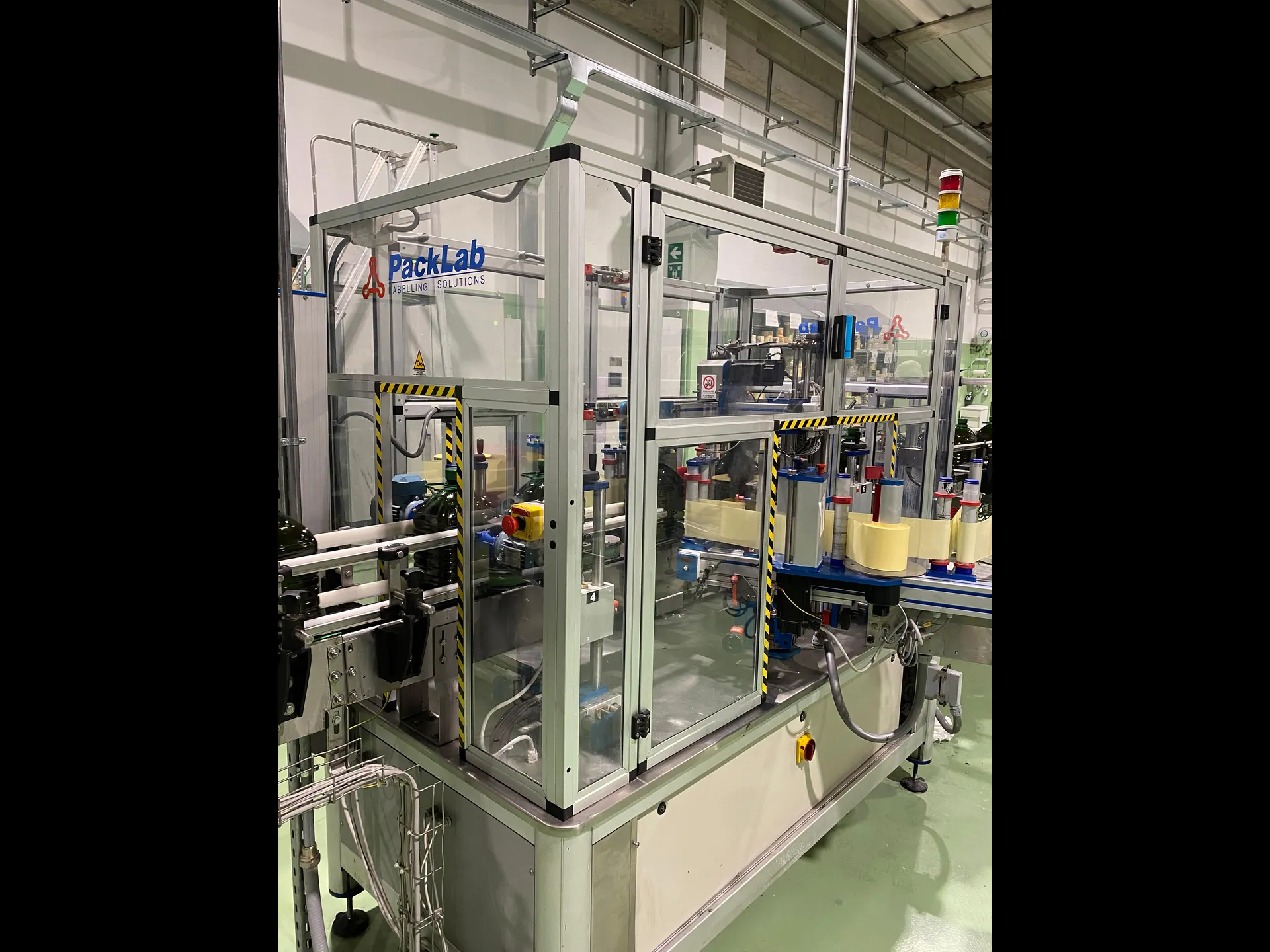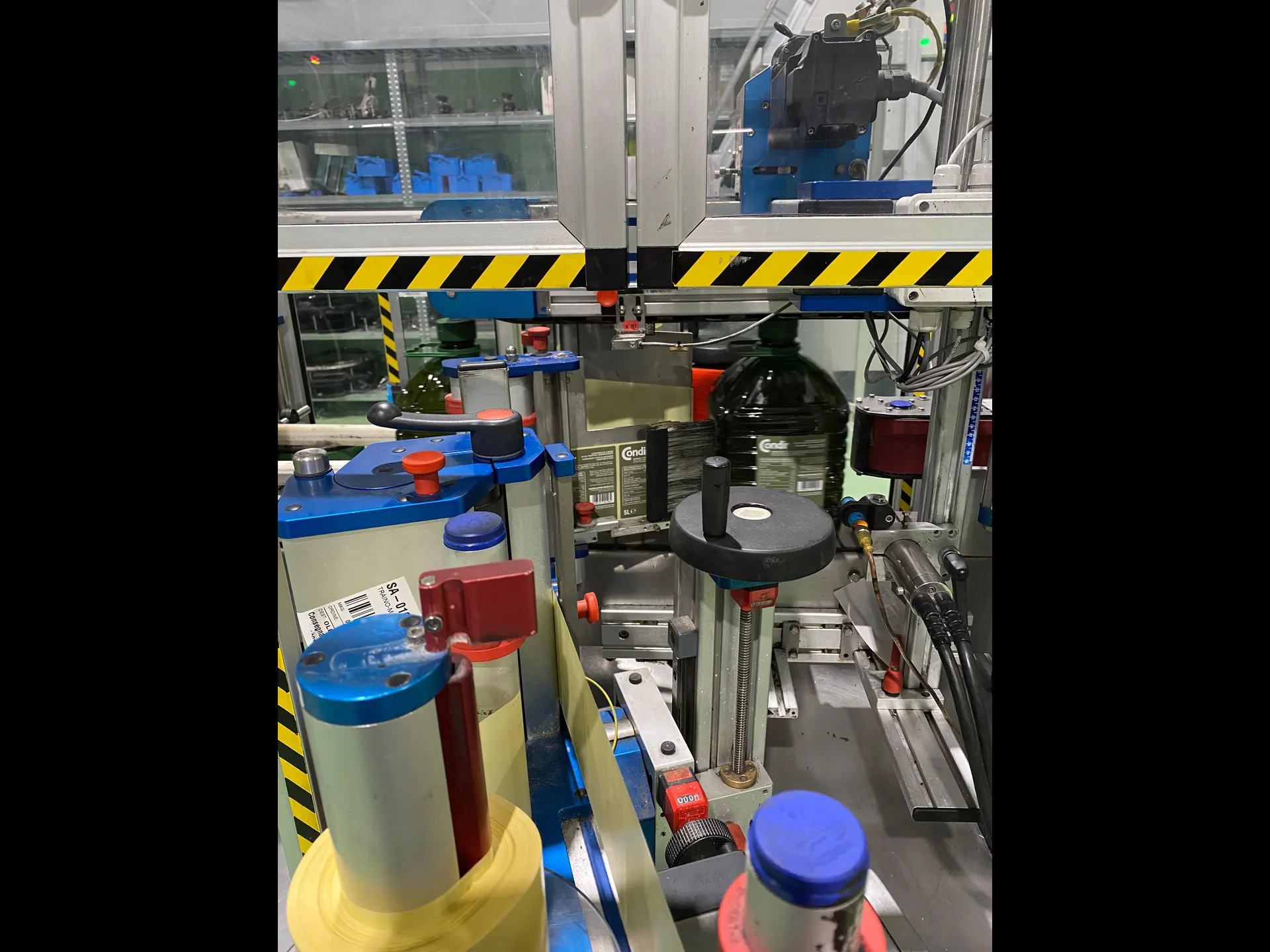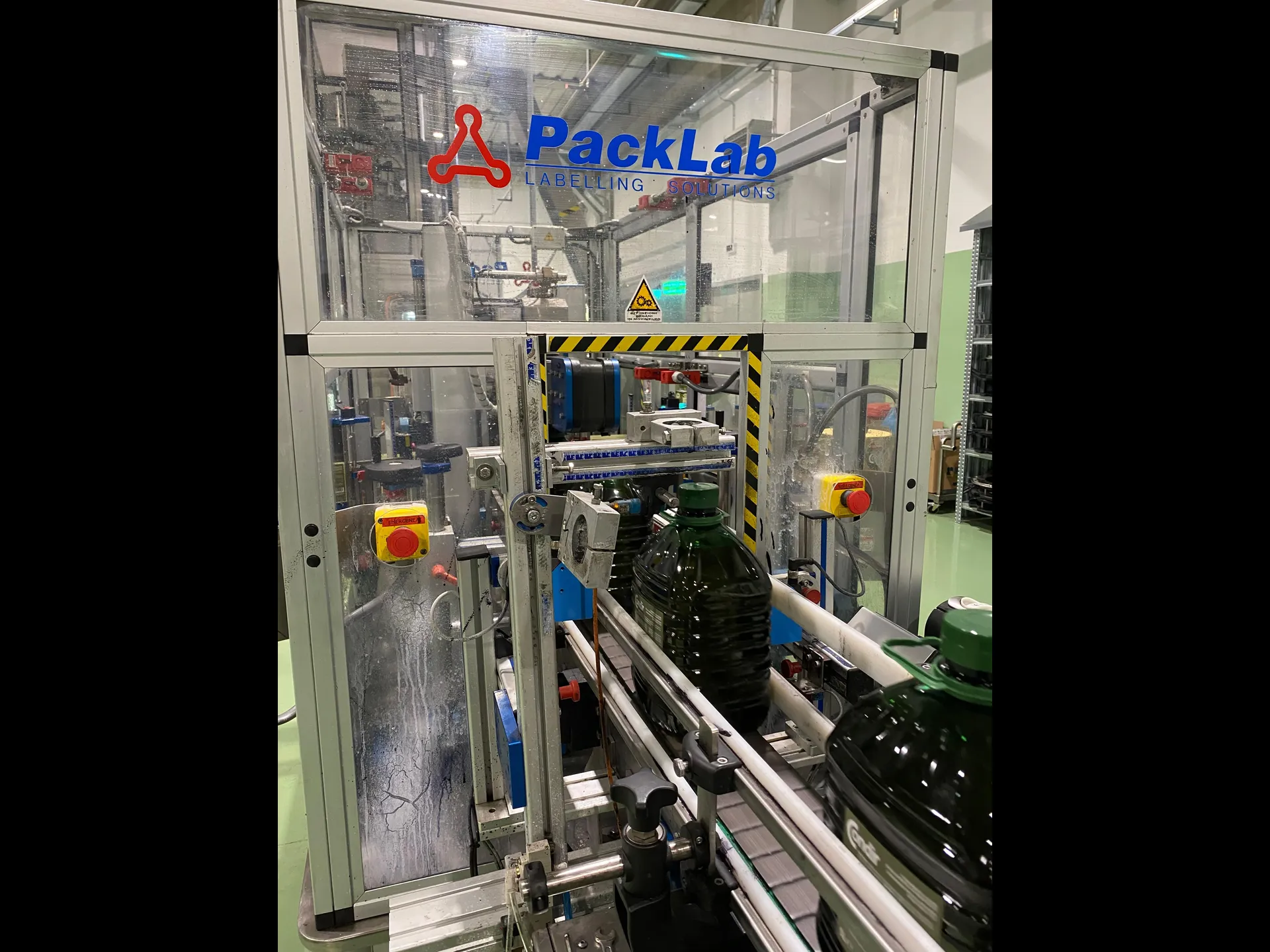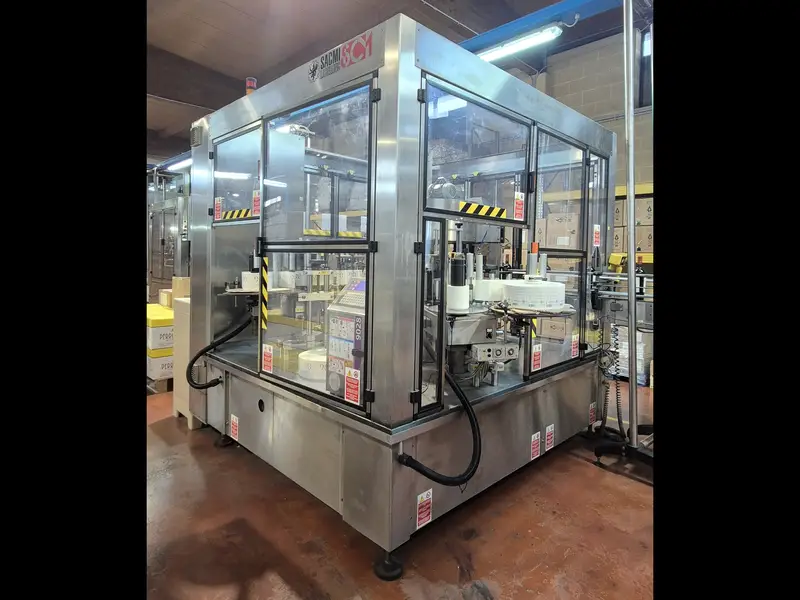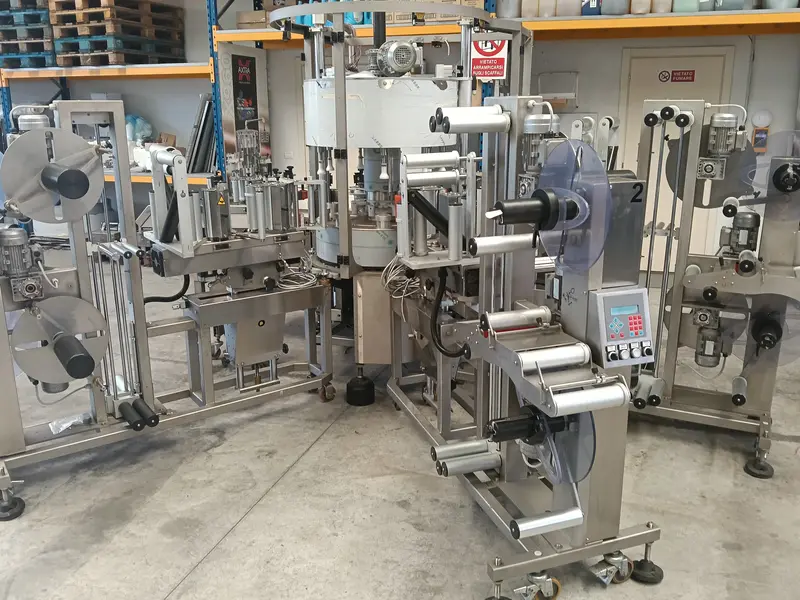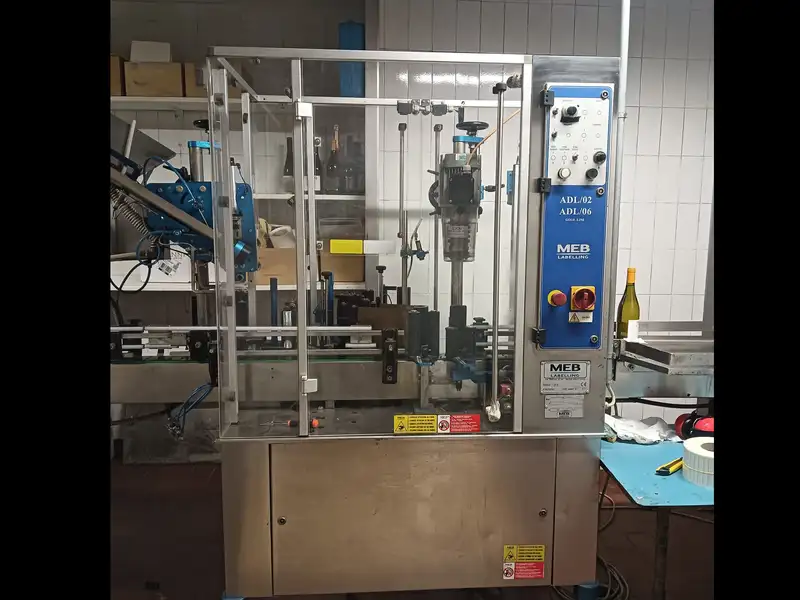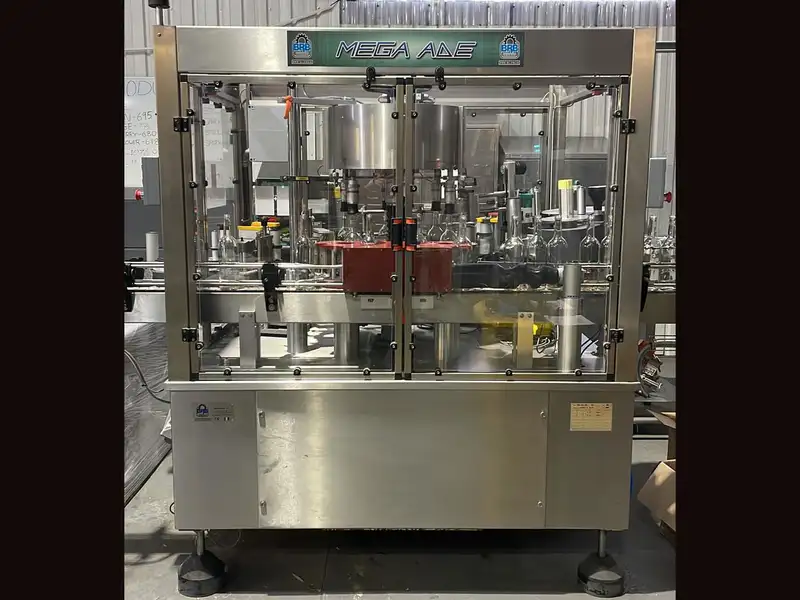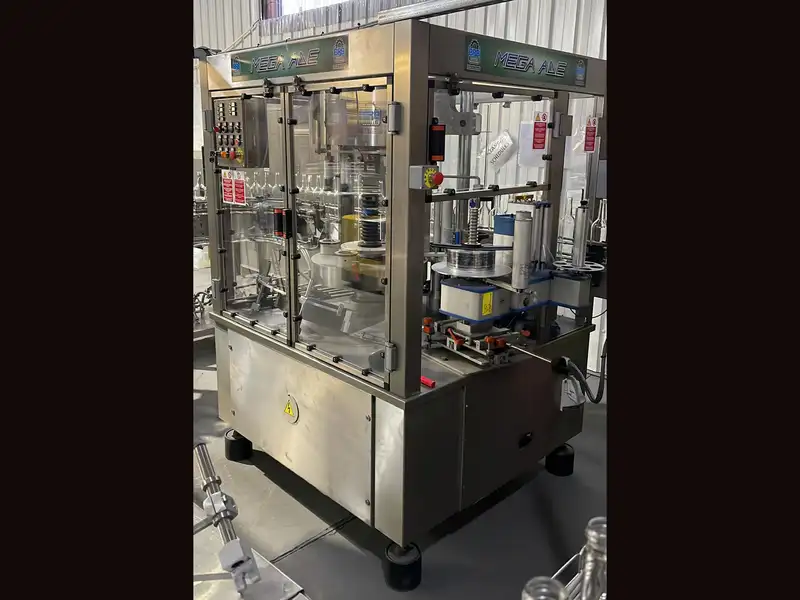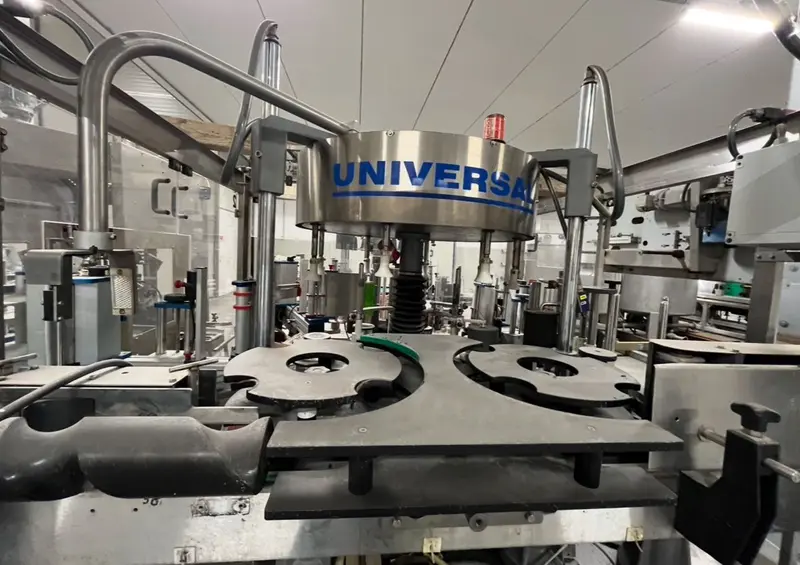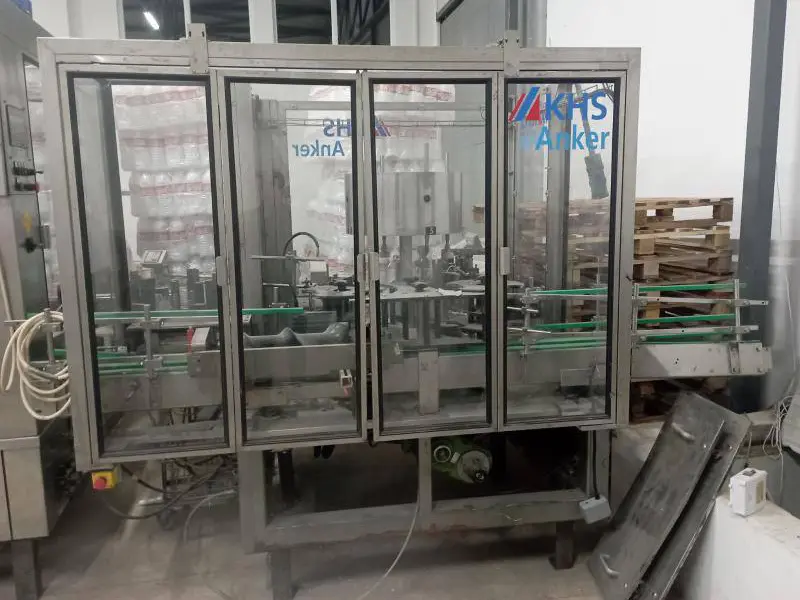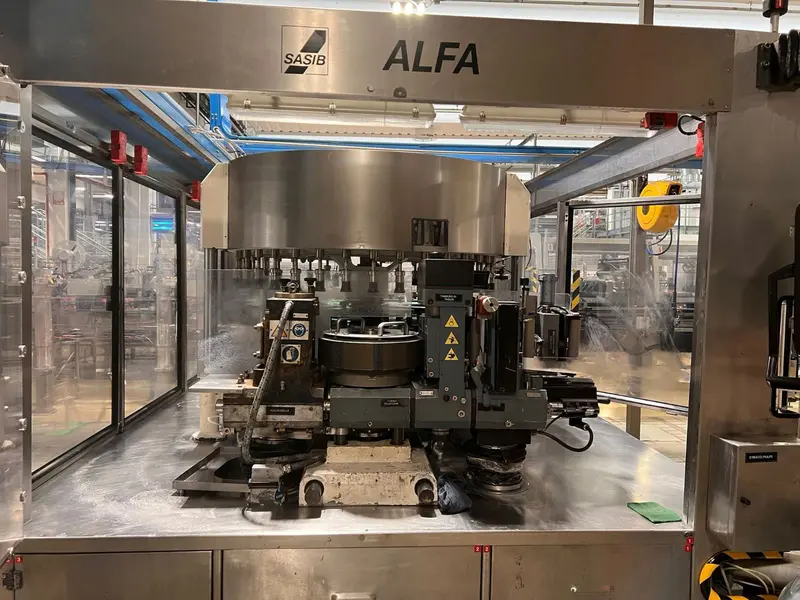Description
Machine Overview
Automatic inline pressure‑sensitive labelling machine equipped with two self‑adhesive application stations for front and back labels. The system conveys containers in a linear path and provides positive product control via an integrated spacing device, wrap/rolling unit and a top hold‑down counter‑belt. At the machine exit a dedicated smoothing system ensures optimal label adhesion and finish. The unit is suited for medium to large containers in the 1–10 L range and has been refurbished in 2022 to extend lifecycle and reliability. Designed and built by P.E., model PACK LAB, year of manufacture 2008.
Key Technical Data
- Configuration: Linear labeller with 2 self‑adhesive stations
- Labelling method: Pressure‑sensitive (adhesive) labels
- Label placement: Front and Back (single or dual application)
- Optical centering: Not equipped (mechanical guidance and product handling)
- Container range: 1–10 L containers (typical rigid bottles/cans with stable base)
- Product handling: Container spacing device, wrap/rolling unit, top hold‑down counter‑belt
- Outfeed: Label smoothing system at machine exit
- Protection class: IP54 (machine and electric motors)
- Year: 2008 | General overhaul: 2022
- Reference: ET225 | Model: PACK LAB | Manufacturer: P.E.
Automation & Control
- Control architecture: Industrial PLC‑based control with 24 VDC auxiliaries for machine logic
- Electrical distribution: 400 V ±5%, 50 Hz, 3P + N + PE (neutral and separate protective earth)
- Instrumentation supply: 24 VAC / 230 VAC
- Operator interface: HMI with recipe/format management and station status (typical for this series)
- Sensors and interlocks: Safety‑interlocked guards, product presence and label application monitoring
Line Integration
- Infeed control: Integrated spacing module stabilizes product pitch before labelling
- Product stabilization: Top hold‑down counter‑belt and wrap/rolling unit for accurate label placement
- Outfeed quality: Smoothing/pressure elements at discharge to ensure adhesion and finish
- Mechanical interface: Linear conveyor path suitable for integration into existing bottling/packaging lines
- Utilities interface: Standard industrial electrical connections as specified below; no optical centering required
Condition & Maintenance
- Refurbishment: Comprehensive overhaul performed in 2022, including verification of application stations, drive components, belts/rollers, guarding and electrical sections
- Preventive maintenance: Routine service recommended on label unwind/rewind groups, rollers, belts and sensors according to operating hours and label materials
- Spare parts: Standard wear components readily serviceable for long‑term support
Performance & Versatility
- Applications: Front and back labelling on a wide variety of rigid containers in the 1–10 L segment (e.g., food, beverages, household/industrial chemicals)
- Materials: Compatible with common pressure‑sensitive label stocks (paper and film) and standard adhesives
- Changeover: Recipe‑based adjustments with mechanical guides and positioning scales to reduce format setup time
- Quality: Stable product handling and final smoothing deliver consistent label alignment and adhesion
- Note: Actual throughput depends on container size/geometry, label dimensions and line conditions
Site Requirements
- Electrical supply: 400 V ±5%, 50 Hz, 3P + N + PE
- Auxiliaries: 24 VDC controls; instrumentation at 24 VAC / 230 VAC
- Environmental conditions: Temperature 5–40 °C; Relative humidity 30–80% non‑condensing; Altitude ≤ 1000 m a.s.l.
- Area classification: Non‑hazardous; no explosive atmospheres
- Ingress protection: IP54 machine and motors; install in a dry, clean area
Safety & Compliance
- Machine guarding: Full guarding with interlocked access doors and emergency stop circuitry
- Electrical protection: IP54 enclosure, segregated neutral and protective earth, compliant with standard industrial practices
- Operational safety: Designed for safe operation with controlled product handling and post‑application smoothing
- Documentation: Electrical characteristics and operating conditions as stated to support risk assessment and commissioning

